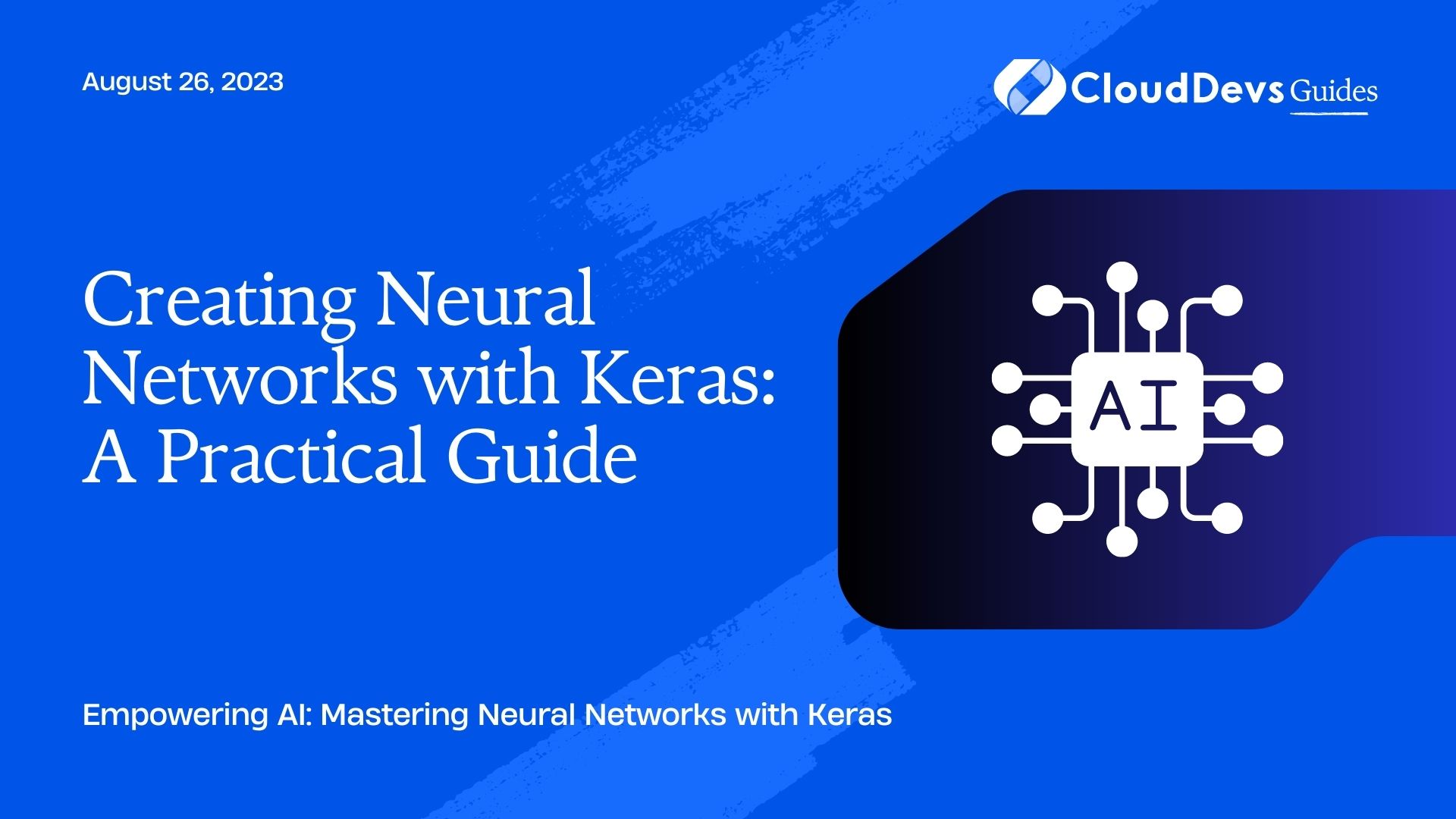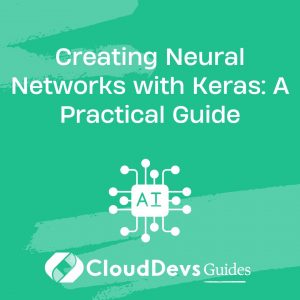Creating Neural Networks with Keras: A Practical Guide
Neural networks have revolutionized the field of artificial intelligence, enabling machines to learn from data and perform complex tasks with remarkable accuracy. Keras, a high-level neural network API written in Python, has gained immense popularity due to its simplicity and ease of use. In this practical guide, we will explore the fundamentals of building neural networks with Keras and provide step-by-step implementations with code samples to help you get started on your AI journey.
1. Understanding Neural Networks
Before diving into the practical aspects, it’s crucial to understand the basics of neural networks. Neural networks are a set of algorithms inspired by the human brain’s neural structure. They consist of interconnected layers of artificial neurons that process and transform data. Each neuron takes input, applies weights, and passes the result through an activation function to generate an output.
2. Neural Network Components
- Input Layer: The entry point of data into the neural network, responsible for accepting input features.
- Hidden Layers: Intermediate layers between the input and output layers. These layers process and transform the data using weights and activation functions.
- Output Layer: The final layer of the neural network responsible for generating the desired output, such as classification probabilities or numerical predictions.
3. Activation Functions
Activation functions introduce non-linearity to the neural network, enabling it to learn complex patterns and relationships in the data. Some popular activation functions include:
- ReLU (Rectified Linear Unit): f(x) = max(0, x) – widely used in hidden layers due to its simplicity and effectiveness in preventing the vanishing gradient problem.
- Sigmoid: f(x) = 1 / (1 + exp(-x)) – commonly used in the output layer for binary classification problems, as it squashes the output between 0 and 1.
- TanH (Hyperbolic Tangent): f(x) = (2 / (1 + exp(-2x))) – 1 – similar to the Sigmoid function but squashes the output between -1 and 1, making it suitable for multi-class classification problems.
4. Loss Functions
Loss functions quantify the model’s prediction error during training. The choice of the loss function depends on the problem type:
- Mean Squared Error (MSE): Suitable for regression problems, where the output is a continuous numerical value.
- Binary Cross-Entropy: Ideal for binary classification problems, where the output is either 0 or 1.
- Categorical Cross-Entropy: Used for multi-class classification problems, where the output belongs to one of several classes.
5. Building Neural Networks with Keras
Keras simplifies the process of creating neural networks by providing a user-friendly, high-level API that sits on top of deep learning frameworks like TensorFlow and Theano. Let’s walk through the steps to build a neural network using Keras to classify images from the famous MNIST dataset.
Step 1: Install Dependencies
Before we start, ensure you have Keras and TensorFlow installed. You can install them via pip:
python pip install keras tensorflow
Step 2: Import Libraries
First, import the necessary libraries:
python import keras from keras.models import Sequential from keras.layers import Dense
Step 3: Load the Data
The MNIST dataset contains 28×28 grayscale images of handwritten digits (0 to 9). We will load the data and preprocess it for training:
python
from keras.datasets import mnist
(train_images, train_labels), (test_images, test_labels) = mnist.load_data()
# Normalize the pixel values to the range [0, 1]
train_images = train_images.astype('float32') / 255
test_images = test_images.astype('float32') / 255
# One-hot encode the labels
train_labels = keras.utils.to_categorical(train_labels)
test_labels = keras.utils.to_categorical(test_labels)
Step 4: Define the Neural Network
In this example, we’ll create a simple feedforward neural network with two hidden layers:
python model = Sequential() model.add(Dense(512, activation='relu', input_shape=(28 * 28,))) model.add(Dense(256, activation='relu')) model.add(Dense(10, activation='softmax'))
Step 5: Compile the Model
Next, we need to compile the model by specifying the loss function, optimizer, and metrics to monitor during training:
python
model.compile(optimizer='rmsprop',
loss='categorical_crossentropy',
metrics=['accuracy'])
Step 6: Train the Model
Now, we can train the model on the training data:
python
history = model.fit(train_images, train_labels,
epochs=10,
batch_size=128,
validation_split=0.2)
Step 7: Evaluate the Model
Finally, evaluate the model’s performance on the test data:
python
test_loss, test_acc = model.evaluate(test_images, test_labels)
print("Test accuracy:", test_acc)
6. Improving Model Performance
To improve the neural network’s performance, we can experiment with various techniques:
1. Batch Normalization
Batch normalization normalizes the input to a layer, helping with faster convergence and better generalization.
python from keras.layers import BatchNormalization model.add(BatchNormalization())
2. Dropout
Dropout randomly deactivates some neurons during training, preventing overfitting.
python from keras.layers import Dropout model.add(Dropout(0.2))
3. Learning Rate Scheduling
Adjusting the learning rate over time can lead to faster convergence and better results.
python
from keras.optimizers import Adam
optimizer = Adam(learning_rate=0.001)
model.compile(optimizer=optimizer,
loss='categorical_crossentropy',
metrics=['accuracy'])
Conclusion
Congratulations! You’ve learned the essentials of creating neural networks with Keras. Starting from the basic components of a neural network to building and evaluating your model, you now have the tools to dive deeper into the world of deep learning. Experiment with different architectures, optimization techniques, and datasets to enhance your AI models further. Neural networks have opened the door to endless possibilities in artificial intelligence, and Keras makes it accessible to everyone. Happy coding and happy learning!
Table of Contents









